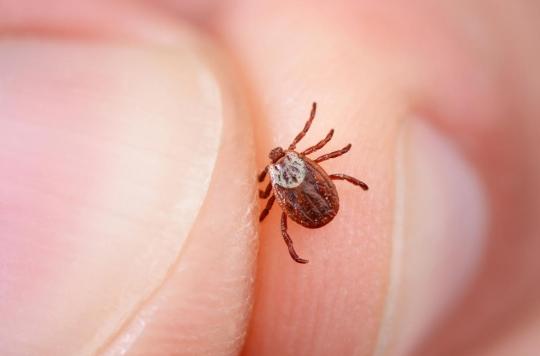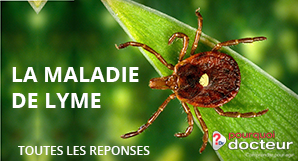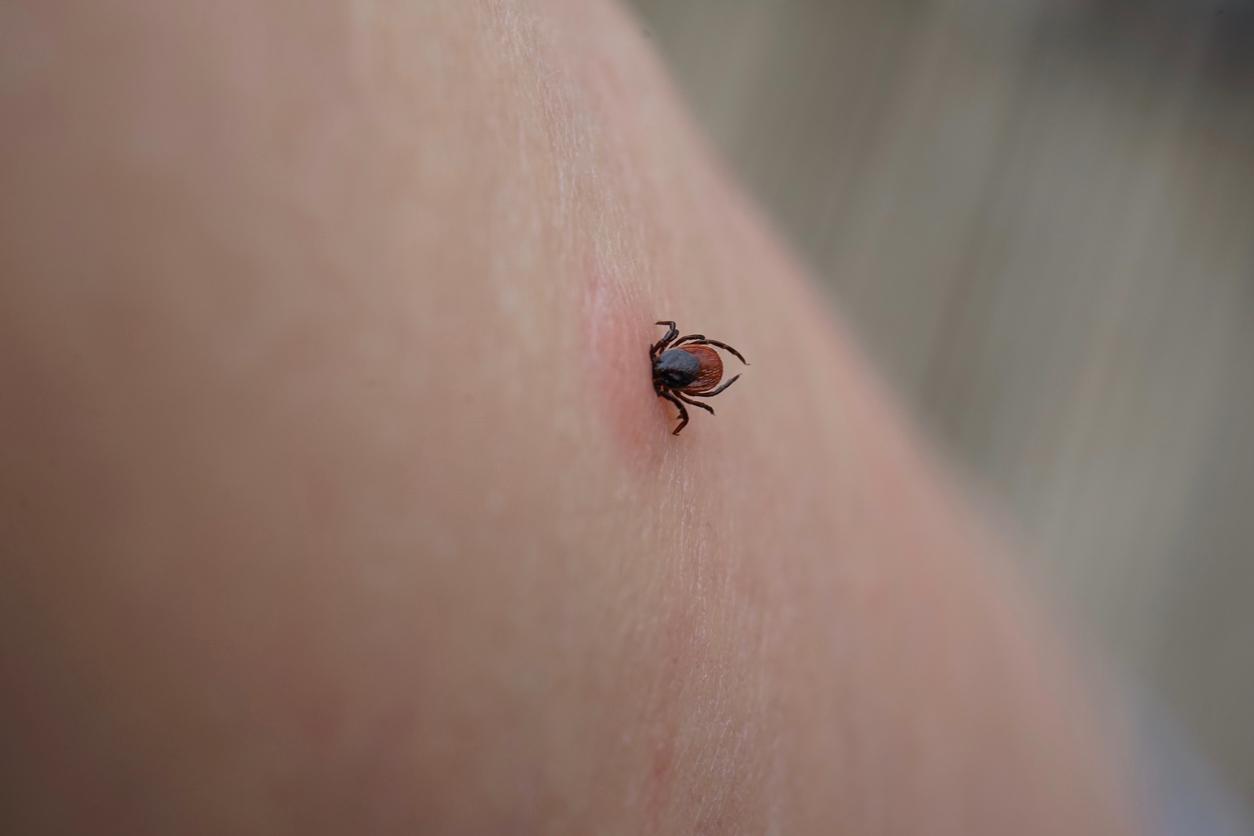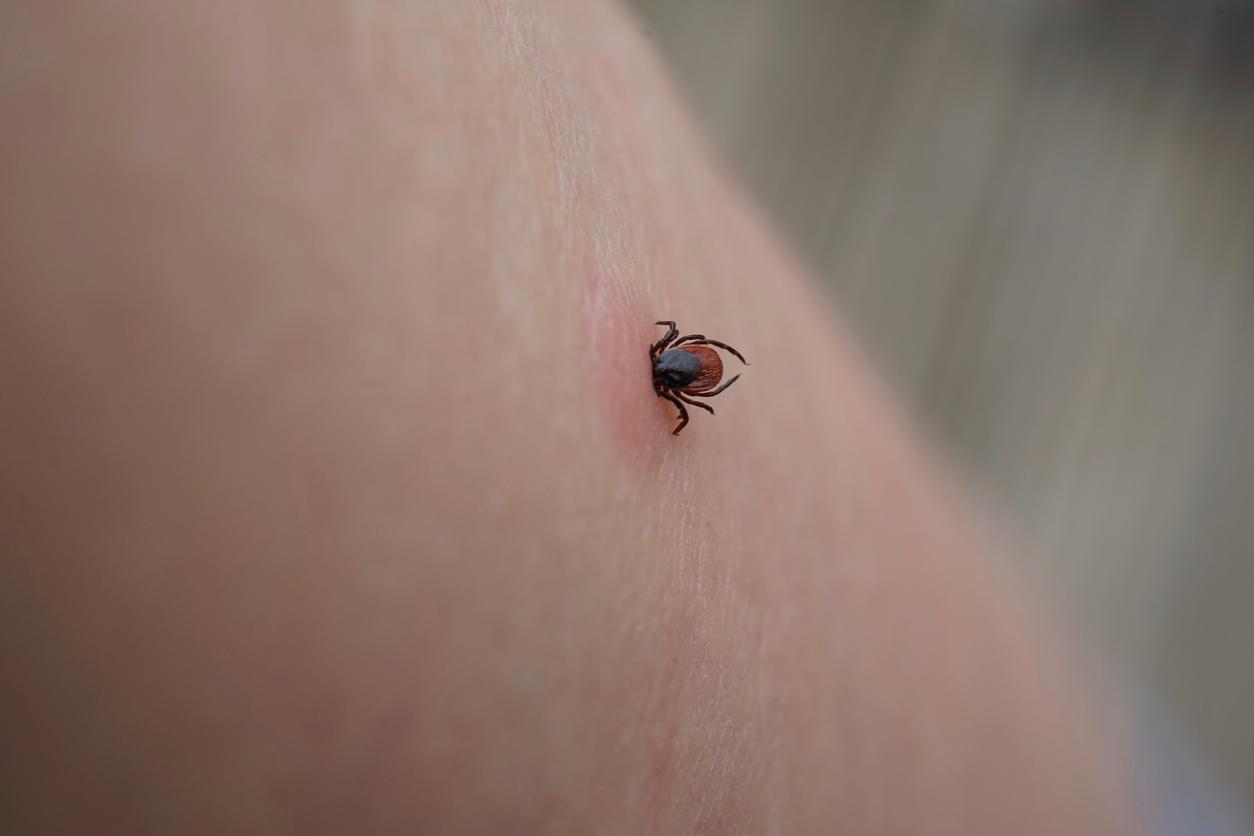Last year 104 cases were detected per 100,000 inhabitants (i.e. more than 67,000 cases), compared to 69 per 100,000 in 2017 (about 45,000 cases).

Public Health France and the Sentinel network observed “a significant increase” in the number of new cases of Lyme disease “diagnosed in general medicine” in France between 2017 and 2018, announced the Ministry of Health in a communicated.
Last year 104 cases were detected per 100,000 inhabitants (i.e. more than 67,000 cases), compared to 69 per 100,000 in 2017 (about 45,000 cases). “Climatic conditions favorable to the development of ticks and the awareness of health professionals to the diagnosis of this disease could explain this increase”, estimates the ministry.
Precautions to be taken seriously
In view of these results, the government recalls the importance of the precautions to be taken before activities in nature, such as wearing long, light-coloured clothing (in order to distinguish them better), a hat, tucking one’s trousers in one’s socks, using recommended tick repellents, and inspecting the whole family at home, including pets that have been out walking.
“The General Directorate of Health also reminds that any citizen can report a tick bite on the national Tick Signaling application. To date, 15,000 reports have been made and approximately 3,500 tick specimens analyzed, which makes it possible to improve knowledge about them”.
Let us also remember that 5 reference centers for the management of tick-borne diseases (CRMVT) have been designated: Clermont-Ferrand University Hospital associated with St Etienne University Hospital, Marseille University Hospital, Rennes University Hospital, Strasbourg University Hospital associated with Nancy University Hospital, Villeneuve-Saint-Georges Intermunicipal Hospital Group associated with Créteil University Hospital.
Symptoms that should alert
Secondary to the transmission of a bacterium during a tick bite (not all are infected with this bacterium), Lyme disease is a pathology of infectious origin which manifests itself by chronic and disabling diffuse pain, which can eventually lead to neurological disorders and facial paralysis.
It may appear within 30 days after the bite, first as a round, red patch that extends in a circle (erythema migrans) from the bite area. The lesion of the skin can be accompanied by muscle and joint pain, or fever. With early treatment, it disappears within a few weeks to a few months. The symptoms are multiple: joint pain, tremors and neurological disorders, memory loss, depression.
In the absence of treatment, the evolution towards the secondary phase is not systematic, but worsens the prognosis: the infection can become chronic and spread from the skin to the whole organism. It will then give serious complications which can affect several organs (joints, brain, heart…). “Months to years after the infection may appear tertiary manifestations, joint, cutaneous, neurological, muscular, or cardiac”, recalls the Ministry of Health.
Towards the recognition of a chronic form of Lyme disease?
On Wednesday July 3, around thirty deputies and senators responded to the call of the Together Against Lyme movement and demonstrated in Paris on Wednesday alongside the 300 patients and relatives who came for the occasion. Together, they protest against the non-recognition of a chronic form of this disease and raise concerns about the confusion surrounding official screening and treatment recommendations. Likewise, they are calling for more resources to conduct research.

.















